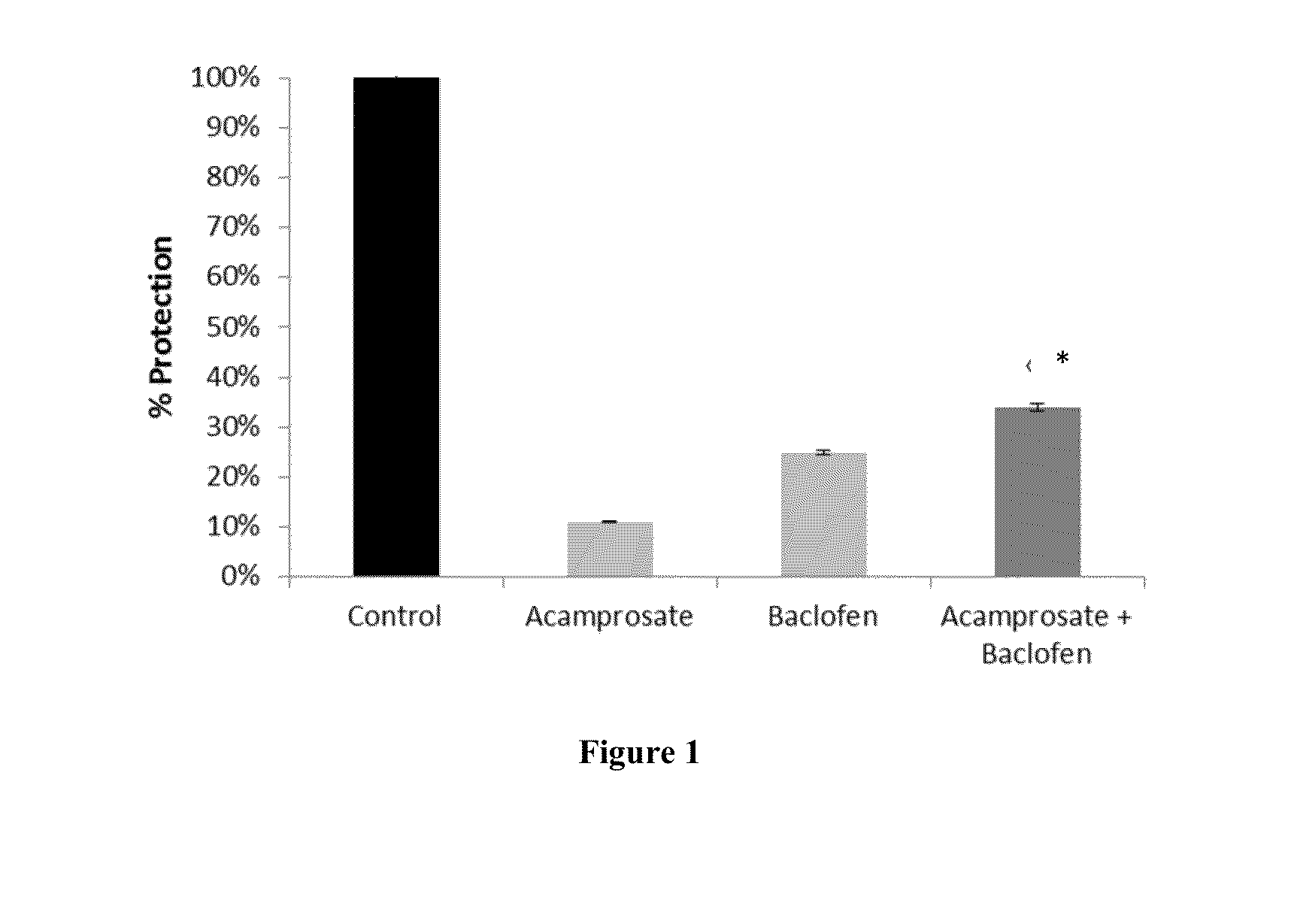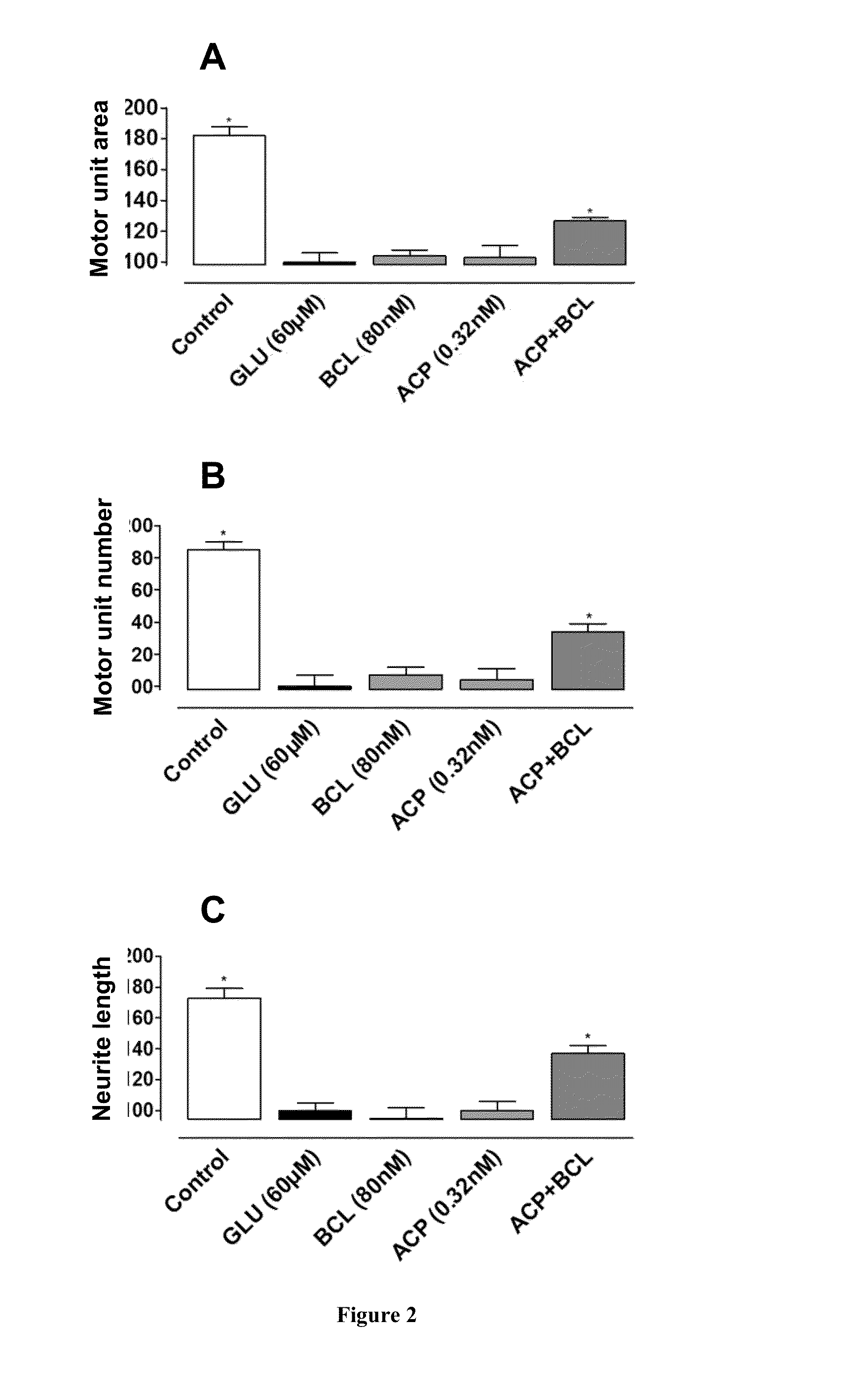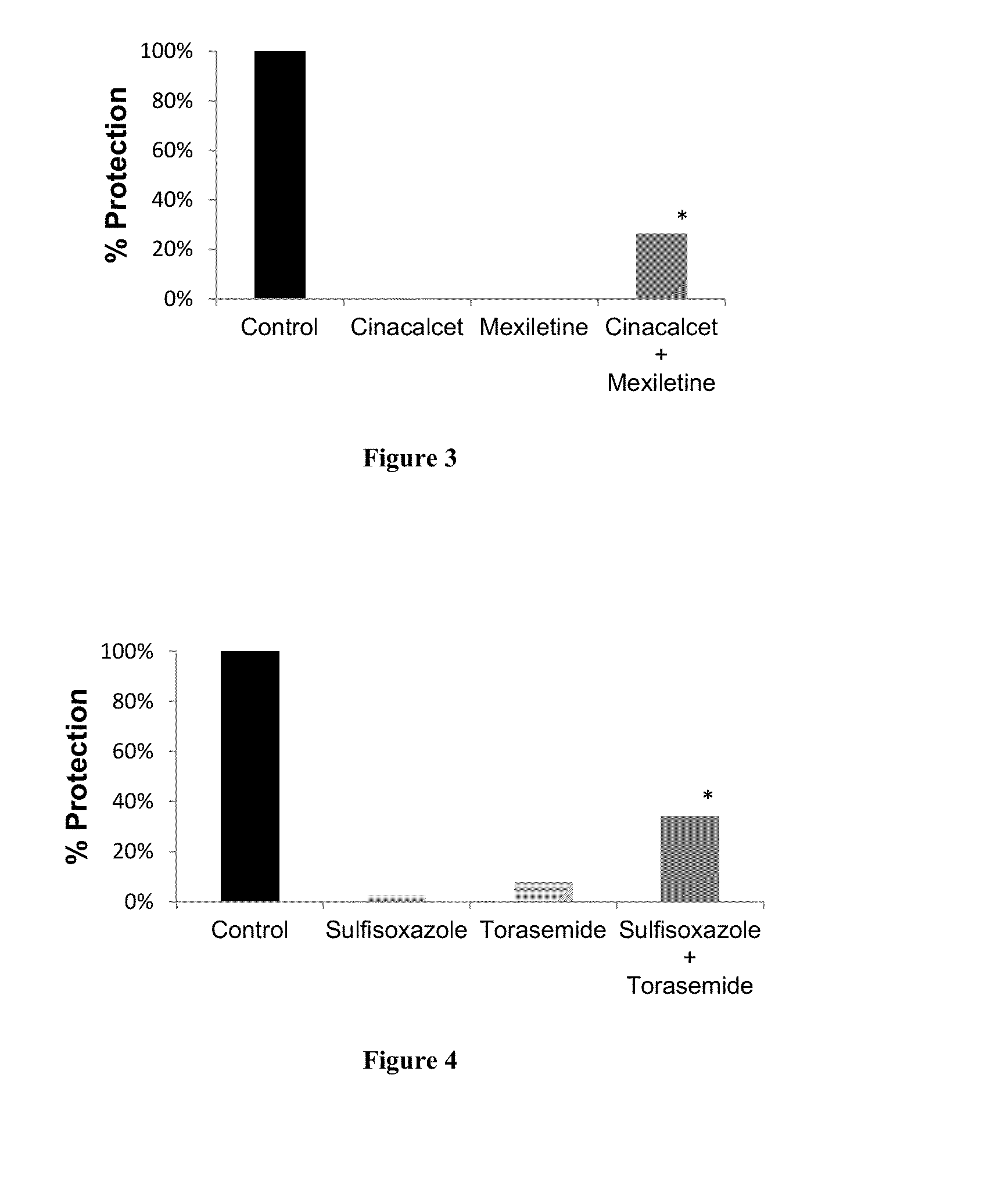Compositions for treating amyotrophic lateral sclerosis
a technology of amyotrophic lateral sclerosis and compositions, applied in the field of combinatorial therapies, can solve the problems of generalized weakness and muscle atrophy, loss of breathing ability, and impaired control of diaphragm, so as to improve the beneficial effect of riluzole, improve the effect of protection, and improve the effect of riluzol
- Summary
- Abstract
- Description
- Claims
- Application Information
AI Technical Summary
Benefits of technology
Problems solved by technology
Method used
Image
Examples
examples
Protective Effect of Drug Combinations in Models of ALS
[0161]Combination therapies according to the present invention are tested in vitro, on rat cortical cells, in a nerve-muscle co-culture model, and in vivo, in a mouse model of ALS. Protocols and results are presented in this section.
[0162]All animal experiments were carried out according to the National Institute of Health (NIH) guidelines for the care and use of laboratory animals, and approved by the National Animal Experiment Board.
[0163]1. Protective Effect Against Glutamate Toxicity in Primary Cultures of Neuronal Cells.
[0164]Glutamate toxicity is involved in the pathogenesis of ALS. In this set of experiment, candidate compounds have been tested for their ability to prevent or reduce the toxic effects of glutamate on neuronal cells. The drugs are first tested individually, followed by assays of their combinatorial action.
Neuronal Cell Preparation
[0165]The efficacy of drug combinations of the invention was first assessed on...
PUM
| Property | Measurement | Unit |
|---|---|---|
| density | aaaaa | aaaaa |
| time | aaaaa | aaaaa |
| chemical purity | aaaaa | aaaaa |
Abstract
Description
Claims
Application Information
 Login to View More
Login to View More - R&D
- Intellectual Property
- Life Sciences
- Materials
- Tech Scout
- Unparalleled Data Quality
- Higher Quality Content
- 60% Fewer Hallucinations
Browse by: Latest US Patents, China's latest patents, Technical Efficacy Thesaurus, Application Domain, Technology Topic, Popular Technical Reports.
© 2025 PatSnap. All rights reserved.Legal|Privacy policy|Modern Slavery Act Transparency Statement|Sitemap|About US| Contact US: help@patsnap.com



